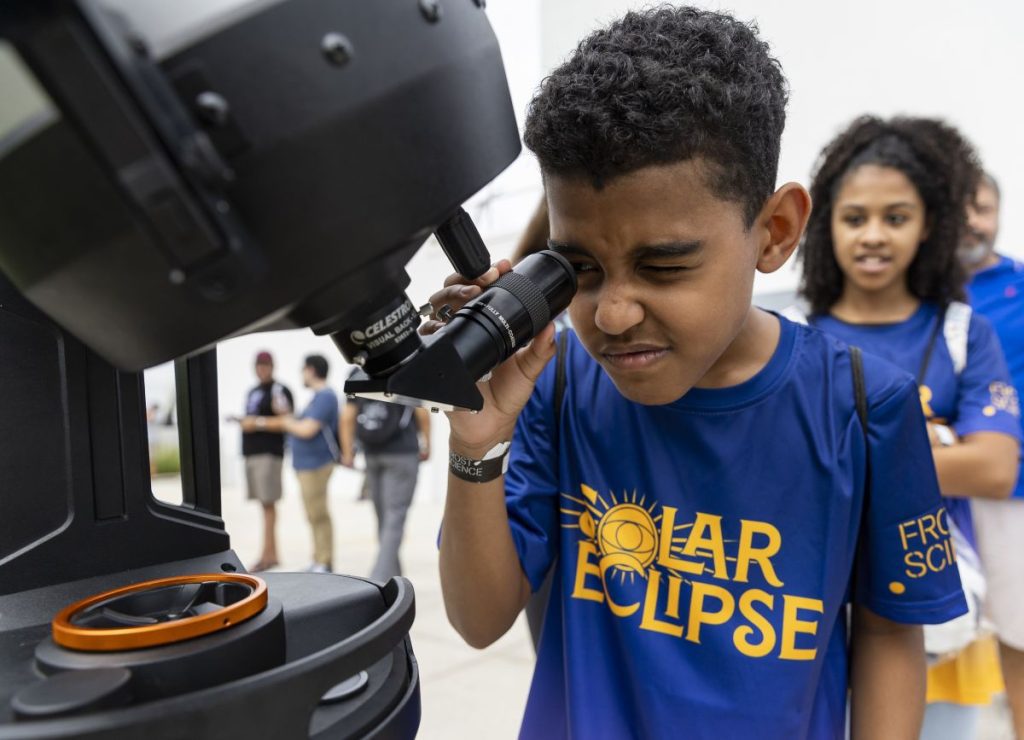People in Edmonton who are eager for a highly-discussed astronomical occurrence happening next month are being asked to attend a safe telescope viewing at the city’s science centre.
“If the weather is clear on Monday, April 8, people in Alberta might be able to see a partial solar eclipse,” TELUS World of Science (TWOS) stated in a news release on Wednesday. TWOS, along with the Royal Astronomical Society of Canada (RASC), is providing an opportunity for Edmontonians to participate in a telescope viewing at the RASC Observatory in Coronation Park. The event is free and takes place from 11 a.m. to 2 p.m. TWOS is also selling safe solar viewers at its Galaxy Gift Shop.
On its website, the U.S.’s National Aeronautics and Space Administration (NASA), describes a partial solar eclipse as an event that occurs “when the Moon comes between the Sun and Earth, but they are not perfectly aligned.”
“Only a part of the Sun will seem to be covered, creating a crescent shape. During a total or annular solar eclipse, people outside the area covered by the Moon’s inner shadow see a partial solar eclipse.”
Frank Florian, TWOS’ senior manager of the planetarium and space sciences, said safely viewing a partial solar eclipse “requires special solar filters.”
“It is not safe to watch a partial solar eclipse with your eyes alone,” he said.
Florian noted that the viewing event is “weather dependent.”
“Dress warmly for the event and let’s hope for clear skies.”
On the day of the event, TWOS is also offering Edmontonians a chance to watch the show
in its Zeidler Dome, allowing them to learn more about eclipses. That show plays at 10:45 a.m. and 2 p.m. on “eclipse day.” A general admission ticket is required in order to see that show.
In Edmonton, the partial eclipse is expected to begin at 11:54 a.m. on April 8. At 12:46 p.m., the event will be in “mid-eclipse” phase while the partial eclipse is expected to end at 1:39 p.m. Totality “For Edmonton, the maximum solar surface area the Moon will cover will be about 23 per cent at the eclipse maximum at 12:46 p.m.,” TWOS said. “The next total solar eclipse visible from Edmonton and most of Alberta will take place on Aug. 22, 2044.”
People in Edmonton who are eager for a highly-discussed astronomical occurrence happening next month are being asked to attend a safe telescope viewing at the city’s science centre.
“For Edmonton, the maximum solar surface area the Moon will cover will be about 23 per cent at the eclipse maximum at 12:46 p.m.,” TWOS said. “The next total solar eclipse visible from Edmonton and most of Alberta will take place on Aug. 22, 2044.”



